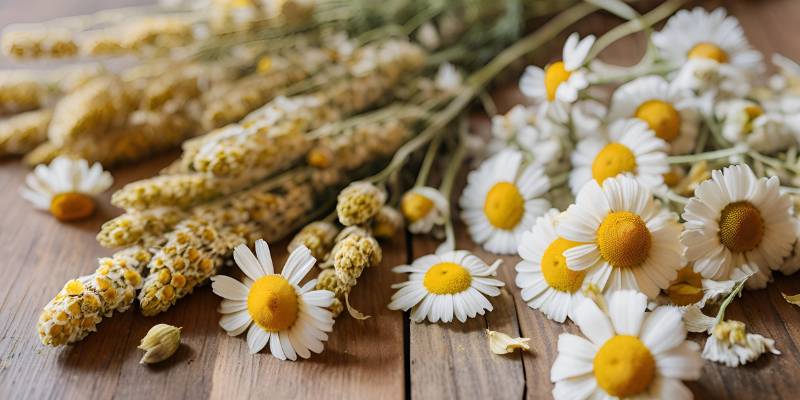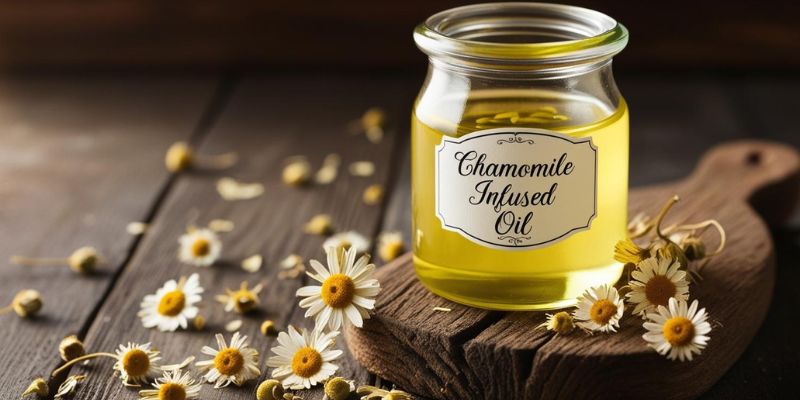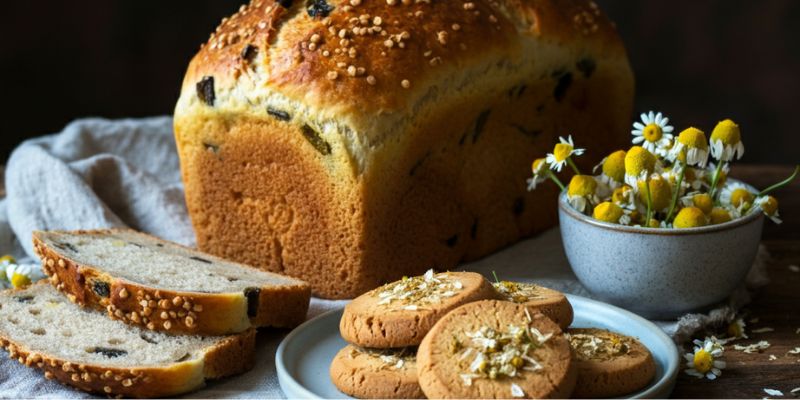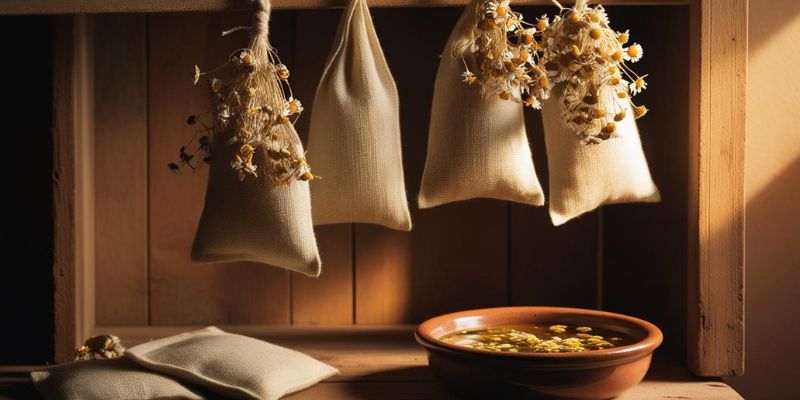Chamomile may seem like just another herb in your pantry, but dried chamomile holds far more power than most people realize. Packed with over 120 active compounds, this delicate flower can do everything from calming your mind to soothing your skin. That’s right—there’s science behind the relaxation it offers and much more you probably haven’t explored yet.
Whether you’re looking to improve digestion, enhance your bedtime routine, or even experiment with unique flavors in your kitchen, Chamomile is a hidden gem worth discovering. It’s time to take a closer look at this versatile botanical and uncover eight fascinating facts that just might inspire you to use it in ways you’ve never considered before. Let’s dive in!

What is Dried Chamomile?
Understanding Dried Chamomile and Its Composition
At its core, dried chamomile refers to the flower heads of the chamomile plant that have been carefully harvested and dried to preserve their potency. The process concentrates its active compounds, which include flavonoids, terpenoids, and antioxidants. These components give chamomile its strong medicinal qualities and enhance its calming aroma.
Two main types dominate the markets and herbal recipes—German chamomile (Matricaria chamomilla) and Roman chamomile (Chamaemelum nobile). While they’re similar in uses, German chamomile is more commonly used in teas due to its slightly sweeter flavor. Drying this herb amplifies its versatility, allowing it to be used in teas, skincare products, and even unique culinary recipes.
Nutrition Profile of Dried Chamomile
Dried chamomile is far more than a calming herb for your evening tea—it’s a nutrient-rich marvel with a host of benefits for your well-being. Packed into just a teaspoon (about 1.2 grams) are approximately 2 calories, along with 0.1 grams of protein and 0.5 grams of carbohydrates, including 0.2 grams of dietary fiber, making it a guilt-free addition to any diet. But the real strength of chamomile lies in its wealth of essential minerals like calcium, magnesium, and potassium, which are vital for maintaining strong bones, steady nerve function, and healthy muscles.
Beyond these, it’s a treasure trove of antioxidants, including apigenin and chamazulene, which help to combat inflammation and support your immune system. With such a unique combination of nutrients and bioactive compounds, chamomile isn’t just a pantry staple—it’s a small yet powerful ally for a healthier lifestyle.
1. Chamomile Has Ancient Roots
The Ancient Origins of Dried Chamomile
Chamomile’s history stretches back thousands of years. The Egyptians worshipped it as a symbol of the sun, using it in medicinal blends and embalming practices. Greeks and Romans took note of its anti-inflammatory properties, incorporating it into salves and tonics. Farmers even referred to it as “the plant’s physician” because planting chamomile near ailing crops seemed to revive their strength.
Its long-standing association with healing persists to this day. Though now neatly packaged as chamomile in tea bags, its rich historical story adds depth to this seemingly humble flower.

2. It’s a Natural Sleep Aid
Why Dried Chamomile is Synonymous with Sleep
We often reach for chamomile tea on sleepless nights, and there’s good reason for that. Dried chamomile contains a compound called apigenin, a natural relaxant that binds to receptors in your brain to reduce anxiety and promote sleep. Think of it as a gentle nudge to quiet your mind when it’s in overdrive.
For the best results, steep a tablespoon of dried chamomile flowers in hot water for 10 minutes. Sip this tea before bed, and notice how naturally it blends into your evening routine. Beyond tea, chamomile is also used in pillow sprays and essential oil blends meant to pave the way to dreamland.
3. Dried Chamomile Has Skin-Healing Properties
Heal Naturally with Dried Chamomile
Chamomile isn’t just for drinking; it’s also a skincare superhero. Its anti-inflammatory and antibacterial properties make it a natural ally for treating dermatitis, eczema, and minor cuts. Chamomile can also calm redness and irritation, making it ideal for sensitive or acne-prone skin.
A simple DIY tip? Infuse dried chamomile flowers into a carrier oil like almond or jojoba. After a week, strain the flowers, and you’ll have a soothing chamomile-infused oil perfect for your skincare routine. Better still, try adding chamomile to your bath for an all-over calming effect.
4. Safe, But Not for Everyone
Important Safety Considerations for Dried Chamomile
While dried chamomile is generally safe, it isn’t for everyone. People allergic to ragweed, daisies, or marigolds should avoid it, as it can cause adverse reactions. It’s also not recommended for pregnant women, as it may stimulate uterine contractions.
Additionally, if you’re taking medication like blood thinners, consult your doctor before consuming large amounts of chamomile, as it may interact with certain drugs. Being informed ensures that chamomile’s benefits remain as safe as they are effective.

5. Dried Chamomile Enhances Digestion
How Dried Chamomile Works as a Digestive Aid
Digestive discomfort happens to the best of us, but dried chamomile can be a natural remedy to turn to. Known for its antispasmodic properties, it helps relax the muscles in your stomach and intestines, easing bloating, cramping, and indigestion.
For an easy remedy, brew chamomile tea after heavy meals to improve digestion and prevent discomfort. You could also pair it with fresh ginger for added anti-inflammatory effects—an ideal partner for a happy gut.
6. Dried Chamomile as a Cooking Ingredient
Flavor Baking and Beverages with Dried Chamomile
Move over, vanilla extract—dried chamomile is stepping into the kitchen spotlight. Its subtle floral notes make it a fantastic addition to baked goods, syrups, and cocktails. It pairs beautifully with flavors like honey, lemon, and lavender.
For a creative twist, try steeping chamomile in milk before using it in recipes like ice cream, panna cotta, or cake batter. Or, infuse syrup with chamomile for a fragrant cocktail mixer your guests won’t forget!
7. Shelf Life and Storage Tips
Preserving the Quality of Dried Chamomile
One benefit of dried chamomile is its longevity—when stored properly, it can last up to a year without losing potency. The key is to keep it dry, cool, and away from sunlight. An airtight container works best.
Always look for vibrant yellow and white flowers with a fragrant aroma when purchasing dried chamomile. If it smells dusty or faded, it’s past its prime and won’t deliver the full experience.

8. It’s Surprisingly Versatile
Uncommon Uses for Dried Chamomile
Beyond tea and skincare, dried chamomile has a surprising range of uses. Whiten your hair or add golden highlights with a chamomile rinse. Freshen drawers or closets by making sachets with dried flowers. Even your pets can benefit—add it to their baths to soothe irritated skin naturally.
The versatility of dried chamomile means it’s a valuable addition to virtually every aspect of your home and wellness routine.
Discover 9 terrific culinary secrets for using dried sage to elevate your dishes
How to Choose Quality Dried Chamomile
Tips for Finding the Best Dried Chamomile Products
Not all dried chamomile is created equal. High-quality chamomile should be grown organically, free of pesticides, and preserve its bright colors and floral aroma. Look for whole flower heads rather than powder, as they’re typically more potent and flavorful.
Choosing certified organic or sustainably sourced products is also a great way to ensure high quality while supporting ethical farming. Don’t settle for less—your chamomile deserves to shine!
Discover even more fascinating insights about this versatile herb in our blog, “10 Uplifting Truths About Dried Peppermint,” and see how it can elevate both your health and lifestyle!

Conclusion
Chamomile goes beyond your typical herbal tea. Its dried form unlocks a treasure trove of benefits, from calming your mind to enhancing your skin and even transforming your kitchen creations. These eight facts are just the beginning of discovering the immense potential of dried chamomile.
Whether you’re looking to elevate your wellness game or add a natural touch to your everyday life, chamomile is a must-have. Why not start by brewing a cup and exploring the unique ways it can make a difference for you today? You’ll wonder how you managed without it!
“Discover even more ways to elevate your health and cooking with our guide to the 10 breathtaking benefits of dried herbs—a must-read for every kitchen enthusiast!”
Stay connected with us!
- Follow us on Instagram: @RoastedKitchen25 for daily cooking inspiration.
- Subscribe to our newsletter for exclusive recipes, expert tips, and kitchen hacks straight to your inbox!
FAQ
1. What are the main health benefits of dried chamomile?
Chamomile is known for its calming effects, making it a natural remedy for stress and sleep issues. It’s also rich in antioxidants like apigenin and chamazulene, which may help reduce inflammation, strengthen the immune system, and support digestive health.
2. How can I use dried chamomile in my daily routine?
You can use chamomile to make tea, add it to baked goods for a subtle floral flavor, or incorporate it into homemade skincare products like face masks and balms. It’s also great as an aromatic addition to baths for relaxation.
3. What’s the best way to store dried chamomile?
Keep chamomile in an airtight container, stored in a cool, dark place away from moisture and direct sunlight. This preserves its potency and ensures it stays fresh for several months.
4. Can I use dried chamomile if I have allergies?
If you’re allergic to ragweed, daisies, marigolds, or similar plants, use chamomile cautiously as it may trigger an allergic reaction. Always consult a healthcare provider if you’re unsure.
5. How do I prepare dried chamomile tea?
To make a cup of chamomile tea, steep 1–2 teaspoons of chamomile flowers in hot water for 5–7 minutes, then strain and enjoy. You can add honey or lemon for extra flavor if desired.

Food has been at the heart of my life since childhood. My father, a passionate restaurateur, owned and ran Cave Way, a beloved restaurant in Narayanganj, Bangladesh. For 19 wonderful years, Cave Way delighted customers with its warm atmosphere and mouthwatering dishes. It was more than a restaurant; it was a community landmark. When my father passed away, the restaurant’s doors closed, but its legacy lived on in me. As a businessman and food enthusiast, I’ve always felt a connection to the joy and stories that food brings into our lives. Roasted Kitchen is my way of honoring that legacy, sharing my passion, and connecting with others who love cooking as much as I do.










 Subscribe to our free newsletter for tips, tutorials, and insights!
Subscribe to our free newsletter for tips, tutorials, and insights!